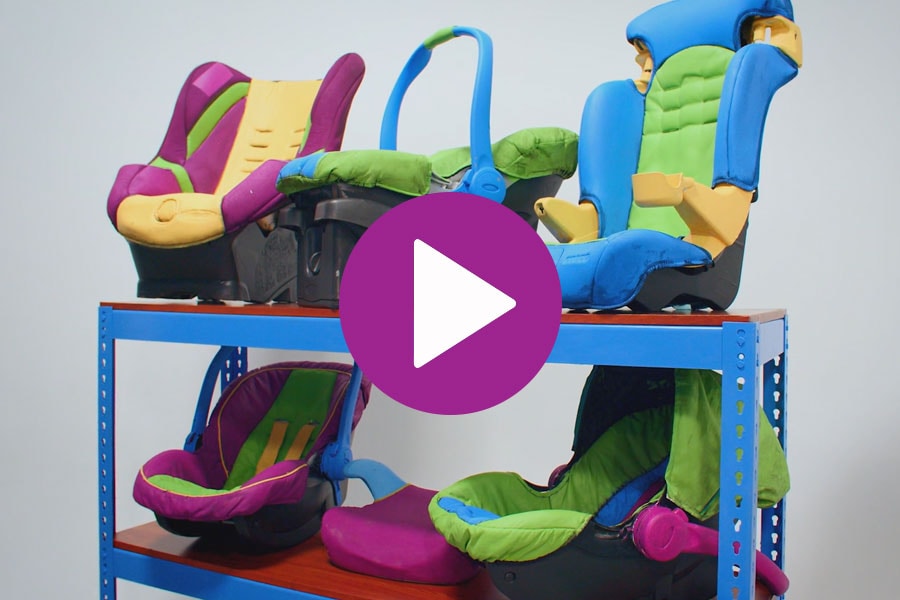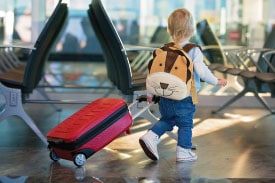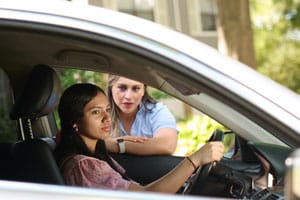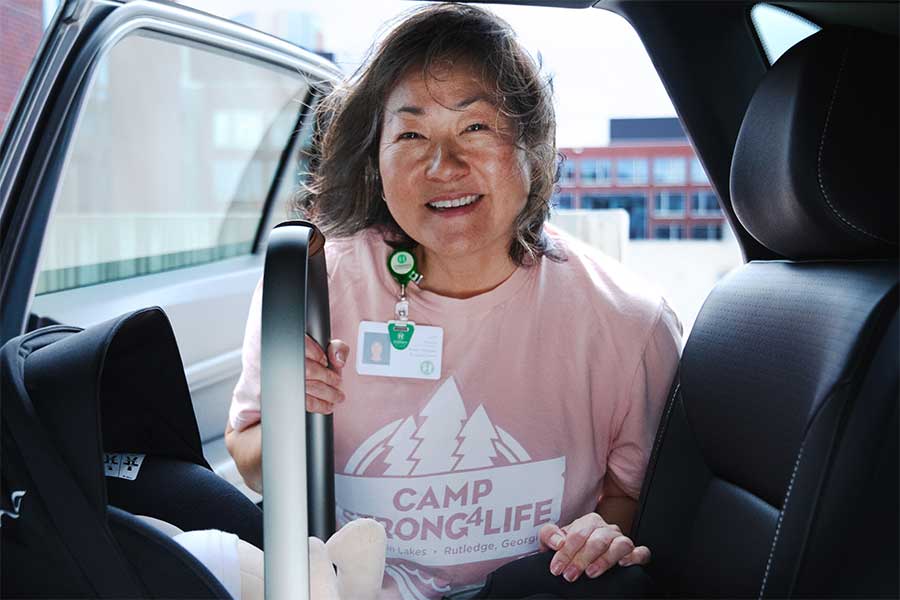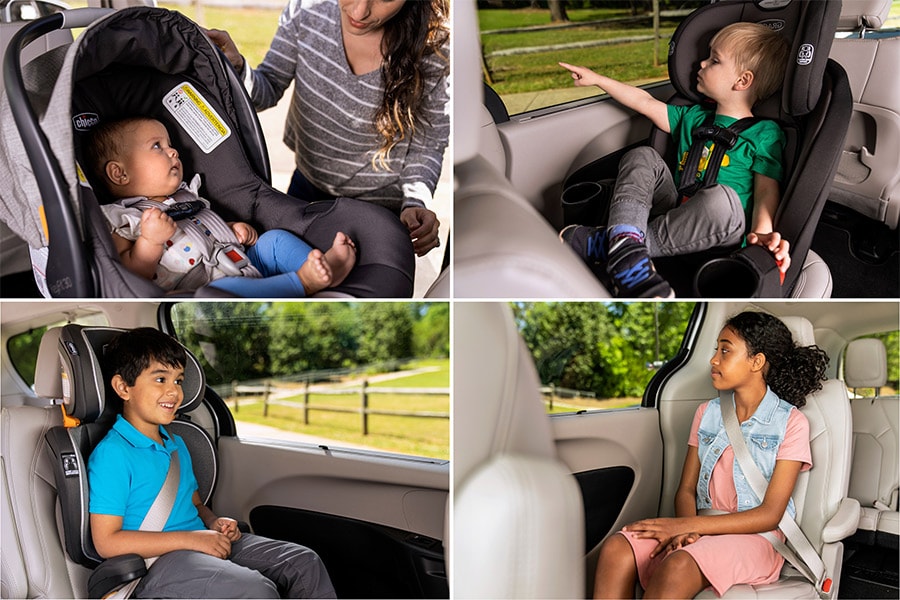How to Keep Kids Safe in the Car
Whether you’re planning the perfect family getaway, traveling to grandma’s house or just going to the grocery store, the car can be a dangerous place for children. Did you know a child younger than 13 is involved in a car crash every 33 seconds? And car crashes are a leading cause of death in children from birth through adolescence?
The stats are frightening, but there are ways you can make car travel safer. Read on for tips to keep kids safe while you’re on the go.
In this article:
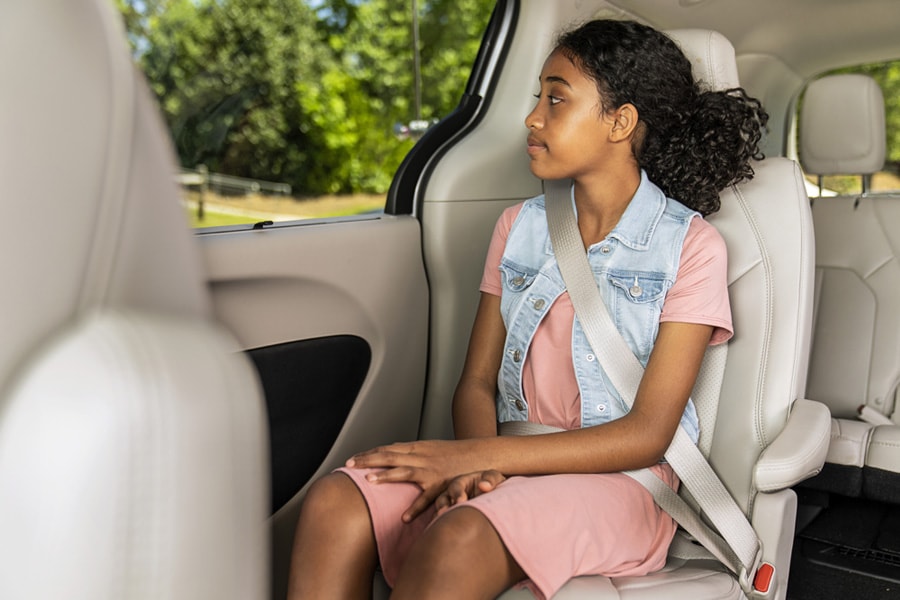
Ensuring kids’ seat belts are secure
“Children should stay in a booster seat for as long as possible,” says Maneesha Agarwal, MD, a pediatric emergency department physician at Children’s Healthcare of Atlanta. “Most children shouldn’t use a seat belt (without the booster) until they are 10 to 12 years old.”
Children are ready to tranisition out of their booster when:
- They are at least 57 inches tall.
- They can sit with their back against the back of the vehicle seat with their knees bent over the edge of the seat.
- The seat belt fits correctly. Make sure the belt lies across the center of the chest and shoulder, and the lap belt fits across the hip bones.
- They can stay seated this way for the duration of your trip.
Once the child starts wearing just a seat belt, you’ll want to keep these safety measures in mind:
- Make sure the child is always using a lap and shoulder belt. Kids like to pull down the shoulder belt or tuck it behind their back for comfort, but this is not safe. The shoulder belt should always lie across their chest and shoulders, and the lap belt should always lie across their hip bones.
- Avoid products that claim to help seat belts fit more securely. These products are not made in accordance with, or regulated by, federal safety standards. If your child is tall enough and mature enough to sit properly in a seat belt, they should not need anything additional to help.
- Make sure each child in the car has their own seat belt—kids should never share a seat belt with another child.
“And remember—children under age 13 should always ride in the backseat,” says Agarwal. “Vehicle airbags are designed with adults in mind, so the front seat is not a safe place for children.”
If your child has an injury or is showing signs of illness, call your doctor or visit an urgent care center. If your child has a life-threatening injury or illness, is having trouble breathing or is unconscious, call 911 and/or visit an emergency department immediately.
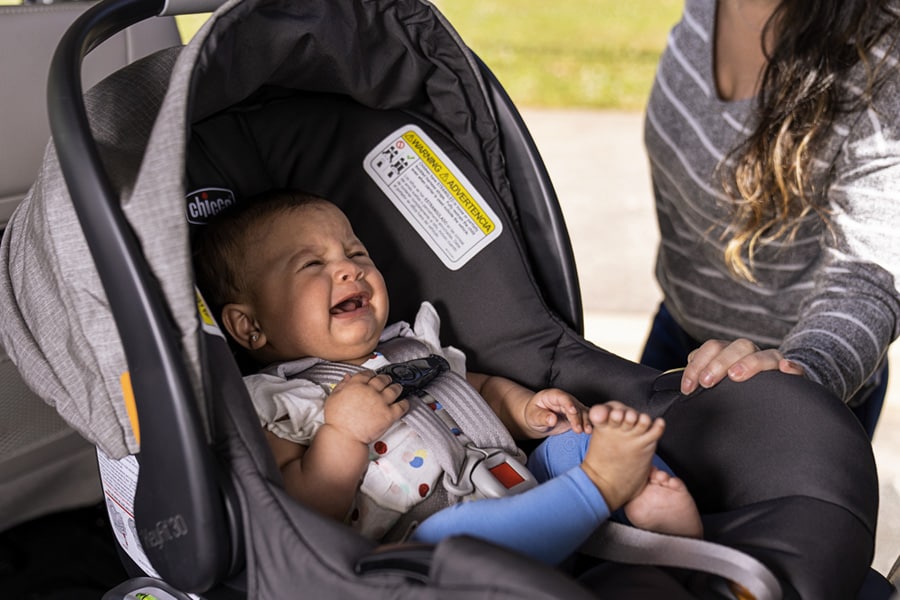
Rear-facing car seat guidelines
While car crashes are a leading cause of injury and death in children, many of these cases are preventable. The key to preventing the unthinkable in a car crash? A properly installed car seat.
The type of car seat you’ll need largely depends on your child’s height and weight. The American Academy of Pediatrics (AAP) recommends that all infants and toddlers ride in rear-facing car seats in the backseat until they reach the highest weight or height indicated by their car seat manufacturer. (Refer to your car seat’s manual or manufacturer website for height and weight limits.) When choosing a seat, always make sure you select one that meets or exceeds Federal Motor Vehicle Safety Standard 213.
Here are some other rules to keep in mind when it comes to rear-facing car seats:
- Raise or lower the harness straps to be at or below the child’s shoulders.
- Make sure the harness is snug. A good rule of thumb? You shouldn’t be able to pinch any slack between your fingers when checking the harness straps over the child’s shoulders and hips.
- Place the chest clip right at the center of the child’s chest, even with their armpits.
- Ensure the car seat is installed in the vehicle using either the seat belt or lower anchors. (You may also see this referred to as LATCH: lower anchors and tethers for children.) You should not be able to move the car seat more than an inch side to side or front to back (we like to call this the "inch" test). If you can, it’s not tight enough.
- If you’re using a convertible car seat in the rear-facing position, double-check that the seat belt or lower anchors are inserted in the correct belt path. The instruction manual should offer specifics for your model.
- If the car seat is in the rear-facing position, make sure it sits at a 45-degree angle using the angle indicator on the car seat.
- If the car seat comes into contact with the back of the front seat, refer to the instruction manual to ensure this is OK.
- Reach out to a certified Child Passenger Safety Technician in your area. CPSTs can help you install a car seat and answer any questions about proper installation or safety.
- Know that it is normal for a child to sit with their legs “crisscross applesauce” or bent up on the vehicle seat. If they’re within the height and weight limit for their rear-facing seat, don't worry about legroom.
- Do not use car seat accessories, such as extra padding, mirrors, strap covers or head support straps. Items that did not come with your car seat are not crash-tested and can become dangerous in a crash.
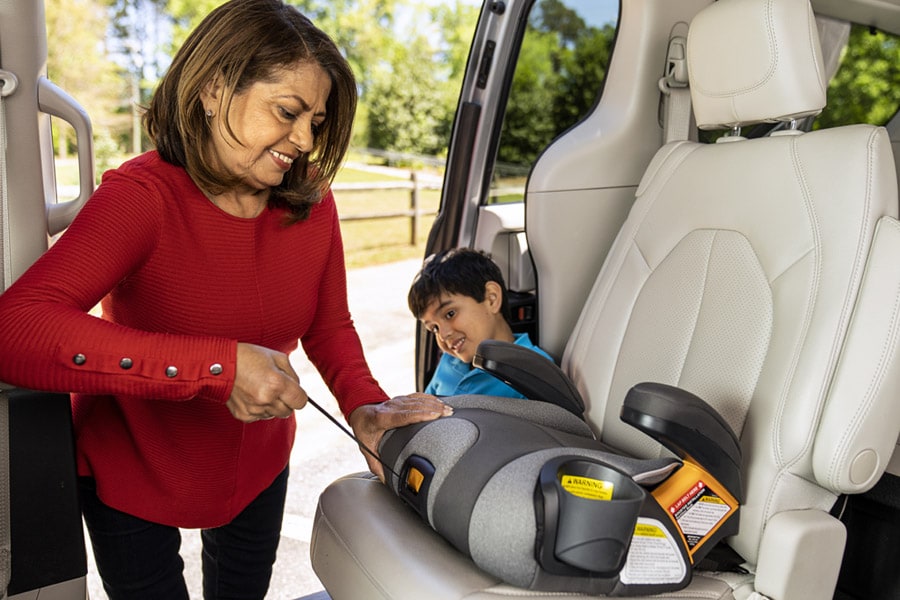
Forward-facing car seat guidelines
As children get older, they will eventually “graduate” to forward-facing seats and booster seats. Aalways check the car seat manufacturer’s weight and height restrictions before putting a child in a new car seat.
Forward-facing seats
Children should remain rear facing for as long as possible, but when a child has outgrown the rear-facing position based on their height or weight, they will need a forward-facing car seat with a harness. Children should also use the forward-facing seat with a harness as long as possible—until the child has outgrown the height or weight requirements indicated by the seat manufacturer.
Here are some important safety precautions to keep in mind when setting up a child’s forward-facing seat:
- Check to make sure the harness straps are positioned just at or above the shoulders.
- Always make sure the child’s seat is appropriately reclined. Read the car seat manual to determine the correct angle the seat should be at.
- Use the top tether anchor while the child is forward-facing, regardless of whether you use the seat belt or lower anchors to install. Check your vehicle and car seat manuals for LATCH weight limits.
Booster seats
The AAP recommends transitioning to a booster seat only once a child exceeds the weight or height requirements of their forward-facing seat, their shoulders are higher than the top harness slots, or their ears are in line with the top of the seat. But just like car seats, there are some very important things to remember when setting up a booster seat:
- Always use a lap and shoulder belt to properly secure the booster seat to the vehicle.
- Check to make sure the lap belt sits low and snug across the child’s hip bones.
- Ensure the shoulder belt is always positioned away from the child’s neck and crosses the middle of their chest and shoulder.
Lastly, all children younger than 13 should ride in the backseat of the car.

